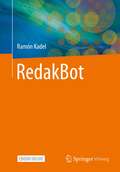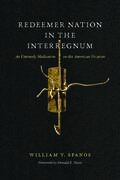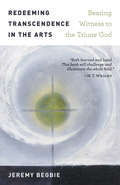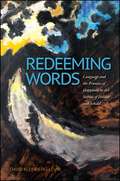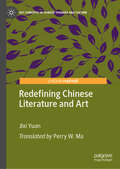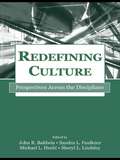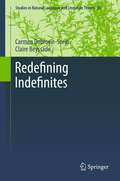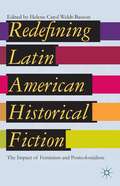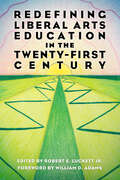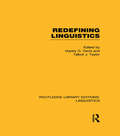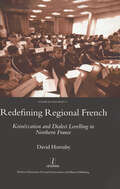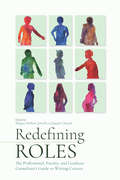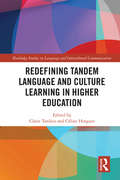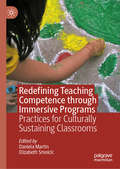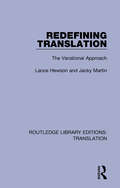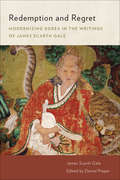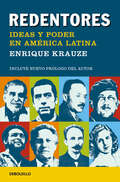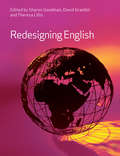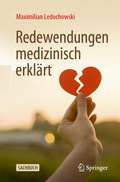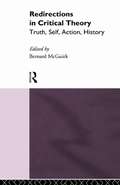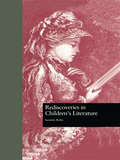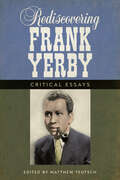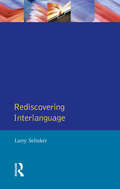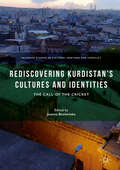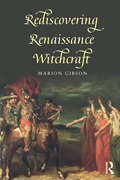- Table View
- List View
RedakBot
by Ramón KadelDer Journalismus ist im Wandel – nicht nur aufgrund des Medienstrukturwandels durch Digitalisierung und Internet, sondern auch aufgrund neuer Technologien, die erstmals sogar ein Stück weit die Existenzberechtigung des Berufsbilds infrage stellen. Werden Journalisten also durch künstliche Intelligenz ersetzt? Nein! Denn KI im Journalismus ist ein „Frenemy“: Freund und Feind zugleich. Freund, wenn man sich auf den KI-Journalismus vorbereitet, Feind für diejenigen, die ihr Mindset nicht ändern können und die neuen Technologien ausschließlich als Bedrohung sehen. Mit der Lektüre dieses Buches sollen Journalisten und Redakteure sowie Volontäre und Studenten im Bereich der Kommunikationswissenschaften konkrete Ideen im Kopf haben, wie sie sich auf die Zeit des KI-Journalismus erfolgreich vorbereiten. Es regt an, innovativ zu sein, und von den neuen Möglichkeiten, die redaktionelle Bots bieten, zu partizipieren – und schließlich zu profitieren. Die Frage ist nicht, ob „RedakBots“ unsere Arbeitswelt verändern, sondern wann dies passiert. Das Buch bereitet darauf vor.
Redeemer Nation in the Interregnum: An Untimely Meditation on the American Vocation
by William V. SpanosRedeemer Nation in the Interregnum interrogates the polyvalent role that American exceptionalism continues to play after 9/11. Whereas American exceptionalism is often construed as a discredited Cold War–era belief structure, Spanos persuasively demonstrates how it operationalizes an apparatus of biopolitical capture that saturates the American body politic down to its capillaries.The exceptionalism that Redeemer Nation in the Interregnum renders starkly visible is not a corrigible ideological screen. It is a deeply structured ethos that functions simultaneously on ontological, moral, economic, racial, gendered, and political registers as the American Calling. Precisely by refusing to answer the American Calling, by rendering inoperative (in Agamben’s sense) its covenantal summons, Spanos enables us to imagine an alternative America.At once timely and personal, Spanos’s meditation acknowledges the priority of being. He emphasizes the dignity not simply of humanity but of all phenomena on the continuum of being, “the groundless ground of any political formation that would claim the name of democracy.”
Redeeming Transcendence in the Arts: Bearing Witness to the Triune God
by Jeremy BegbieHow can the arts witness to the transcendence of the Christian God? Many people believe that there is something transcendent about the arts, that they can awaken a profound sense of awe, wonder, and mystery, of something &“beyond&” this world—even for those who may have no use for conventional forms of Christianity. In this book Jeremy Begbie—a leading voice on theology and the arts—employs a biblical, Trinitarian imagination to show how Christian involvement in the arts can be shaped by the distinctive vision of God&’s transcendence opened up in and through Jesus Christ.
Redeeming Words: Language and the Promise of Happiness in the Stories of Döblin and Sebald (SUNY series, Intersections: Philosophy and Critical Theory)
by David Michael Kleinberg-LevinIn this probing look at Alfred Döblin's 1929 novel Berlin Alexanderplatz and the stories of W. G. Sebald, Redeeming Words offers a philosophical meditation on the power of language in literature. David Kleinberg-Levin draws on the critical theory of Benjamin and Adorno; the idealism and romanticism of Kant, Hegel, Hölderlin, Novalis, and Schelling; and the nineteenth- and twentieth-century thought of Nietzsche, Heidegger, and Derrida. He shows how Döblin and Sebald—writers with radically different styles working in different historical moments—have in common a struggle against forces of negativity and an aim to bring about in response a certain redemption of language. Kleinberg-Levin considers the fast-paced, staccato, and hard-cut sentences of Döblin and the ghostly, languorous, and melancholy prose fiction of Sebald to articulate how both writers use language in an attempt to recover and convey this utopian promise of happiness for life in a time of mourning.
Redefining Chinese Literature and Art (Key Concepts in Chinese Thought and Culture)
by Jixi YuanThis Key Concepts pivot discusses the significance of the ancient Chinese concept of xìng or ‘Association’ in defining Chinese civilization and thought through the centuries. An approach unique to literary creation in China, xìng highlights the importance Chinese civilization sets by the integration of intellect, emotion and will into a highly consistent concept across its personal and public spheres. The book explores how the concept has been a widely used creative technique even in the earliest collections of Chinese poems, using metaphor and symbolism to set the scene and indicate thoughts and emotions invested in the vehicle of metaphor, as well as its impact on Chinese literature and philosophy as a domain of multiple meanings in classical Chinese aesthetics.
Redefining Culture: Perspectives Across the Disciplines (Routledge Communication Series)
by John R. Baldwin Michael L. Hecht Sandra L. Faulkner Sheryl L. LindsleyRedefining Culture: Perspectives Across the Disciplines argues that culture is one of the most important factors we need to know when we interact as well as in our discussions of social problems and their solutions. This book picks up the dialogue where Kroeber and Kluckhohn left off in their classic 1952 collection and analysis of definitions of culture. As a resource for personal and academic libraries, this volume provides an updated listing of over 300 definitions of culture from a wide array of disciplines. Chapters examine how the definition of culture has changed historically, consider themes that cut across the definitions, and provide models for organizing approaches to defining culture. To round out this multi-disciplinary perspective, Renato Rosaldo provides a foreword, and prominent authors from six disciplines write about how they conceptualize culture and use it in their research and practice. This resource is an indispensable reference for scholars studying or integrating culture into their work. It will appeal to anyone interested in culture, particularly students and scholars in anthropology, intercultural and international communication, cultural studies, cultural and social psychology, linguistics, sociology, family studies, political science, intergroup relations, cultural geography, and multicultural education.
Redefining Indefinites
by Carmen Dobrovie-Sorin Claire BeyssadeThis volume explores the interpretation of indefinites and the constraints on their distribution by paying particular attention to key issues in the interface between syntax and semantics: the relation between the semantic properties of indefinite determiners and the denotation of indefinite DPs, their scope, and their behaviour in generic and conditional sentences. Examples come from French, other Romance languages and English. Central to the proposed analyses is a distinction between two types of entities, individualized entities and amounts. Weak indefinites are analyzed as existential generalized quantifiers over amounts and strong indefinites as either Skolem terms or generalized quantifiers over individualized entities. The up-to-date review of the literature and the new falsifiable proposals contained in this book will be of particular interest to linguistics students and scholars interested in the cross-linguistic semantics of indefinites.
Redefining Latin American Historical Fiction
by Helene Carol Weldt-BassonCurrent scholarship on Latin American historical fiction has failed to take feminism and postcolonialism into account. This study uses these important contemporary discourses as a starting point for a new definition of the Latin American historical novel that includes national identity, magical realism, historical intertextuality, and symbolism.
Redefining Liberal Arts Education in the Twenty-First Century
by Robert E. LuckettContributions by William D. Adams, Sarah Archino, Mario J. Azevedo, Katrina Byrd, Rico D. Chapman, Helen O. Chukwuma, Monica Flippin Wynn, Tatiana Glushko, Eric J. Griffin, Kathi R. Griffin, Yumi Park Huntington, Thomas M. Kersen, Robert E. Luckett Jr., Floyd W. Martin, Preselfannie W. McDaniels, Dawn Bishop McLin, Lauren Ashlee Messina, Byron D'Andra Orey, Kathy Root Pitts, Candis Pizzetta, Lawrence Sledge, RaShell R. Smith-Spears, Joseph Martin Stevenson, Seretha D. Williams, and Karen C. Wilson-Stevenson Redefining Liberal Arts Education in the Twenty-First Century delves into the essential nature of the liberal arts in America today. During a time when the STEM fields of science, technology, engineering, and math dominate the narrative around the future of higher education, the liberal arts remain vital but frequently dismissed academic pursuits. While STEAM has emerged as a popular acronym, the arts get added to the discussion in a way that is often rhetorical at best. Written by scholars from a diversity of fields and institutions, the essays in this collection legitimize the liberal arts and offer visions for the role of these disciplines in the modern world. From the arts, pedagogy, and writing to social justice, the digital humanities, and the African American experience, the essays that comprise Redefining Liberal Arts Education in the Twenty-First Century bring attention to the vast array of ways in which the liberal arts continue to be fundamental parts of any education. In an increasingly transactional environment, in which students believe a degree must lead to a specific job and set income, colleges and universities should take heed of the advice from these scholars. The liberal arts do not lend themselves to the capacity to do a single job, but to do any job. The effective teaching of critical and analytical thinking, writing, and speaking creates educated citizens. In a divisive twenty-first-century world, such a citizenry holds the tools to maintain a free society, redefining the liberal arts in a manner that may be key to the American republic.
Redefining Linguistics: Linguistics: Redefining Linguistics (Routledge Library Editions: Linguistics)
by Talbot J. Taylor Hayley G. DavisThe academic discipline of linguistics is at a critical stage of development. Whatever consensus there may have been fifteen or even ten years ago is fast disappearing. A process of redefinition is underway, and it is the aim of this volume to contribute to that process, explain why a redefinition is needed, and how it should proceed. In the case of linguistics the subject is also the subject matter. Many linguists have ignored the problem of definition, simply regarding linguistics as the ‘science of language itself’. What, though, is ‘language itself’? Is it a language, ie English, Swahili? Or, language in a more general sense? The primary goal of a redefinition of linguistics should be to demonstrate that language is not an objective matter. Linguistics is, and should be, the study of whatever is linguistically pertinent. A linguistics redefined would look at how we interpret and construct our day-to-day communication acts, what views of language are shared by and opposed by societies, and the source and roles that these views play in our living and learning experience. These papers argue the case for such a redefinition more explicitly than has ever been done before in modern linguistic theory. Such a redefined perspective, precisely because it is a perspective, subject to ‘outside’ influence, and in constant dialogue with the perspective of the other human sciences, must be endlessly redefined.
Redefining Regional French
by David HornsbyThis study challenges the orthodox view that emergent regional varieties of French represent no more than an ephemeral dialect residue of little theoretical interest. It follows the life cycle of an obsolescent urban Picard variety, spoken in a mining town in the Pas-de-Calais, and attempts to unravel the complex reasons behind the survival of some local variants at the expense of others. Applying a sociolinguistic model developed by Peter Trudgill, it shows how the processes of levelling and simplification have driven change in a dialect contact situation, giving rise to a new, stable variety or koine. This is compared with other new urban varieties in Sweden and the UK, where different economic, social and demographic conditions have produced very different linguistic outcomes. The emergence of Regional French in the north, it is argued, may herald the start of a new diversification of French in Europe. This book will therefore interest both students of French and of language variation more generally.
Redefining Roles: The Professional, Faculty, and Graduate Consultant’s Guide to Writing Centers
by Megan Swihart Jewell Joseph CheatleRedefining Roles is the first book to recognize and provide sustained focus on the presence of professional, faculty, and graduate student consultants in writing centers. A significant number of writing centers employ non-peer consultants, yet most major training manuals are geared toward undergraduate tutoring practices or administrators. This collection systematically addresses this gap in the literature while initiating new conversations regarding writing center staffing. Thirty-two authors, consultants, and administrators from diverse centers—from large public four-year institutions to a private, online for-profit university—provide both theoretical frameworks and practical applications in eighteen chapters. Ten chapters focus on graduate consultants and address issues of authority, training, professional development, and mentoring, and eight focus on professional and faculty consultant training as well as specific issues of identity and authority. By sharing these voices, Redefining Roles broadens the very idea of writing centers while opening the door to more dialogue on the important role these practitioners play. Redefining Roles is designed for writing center practitioners, scholars, and staff. It is also a necessary addition to help campus administrators in the ongoing struggle to validate the intellectually complex work that such staff performs. Contributors: Fallon N. Allison, Vicki Behrens, Cassie J. Brownell, Matt Burchanoski, Megan Boeshart Burelle, Danielle Clapham, Steffani Dambruch, Elise Dixon, Elizabeth Festa, Will Fitzsimmons, Alex Frissell, Alex Funt, Genie Giaimo, Amanda Gomez, Lisa Lamson, Miriam E. Laufer, Kristin Messuri, Rebecca Nowacek, Kimberly Fahle Peck, Mark Pedretti, Irina Ruppo, Arundhati Sanyal, Anna Scanlon, Matthew Sharkey-Smith, Kelly A. Shea, Anne Shiell, Anna Sicari, Catherine Siemann, Meagan Thompson, Lisa Nicole Tyson, Marcus Weakley, Alex Wulff
Redefining Tandem Language and Culture Learning in Higher Education (Routledge Studies in Language and Intercultural Communication)
by Claire Tardieu Céline HorguesRedefining Tandem Language and Culture Learning in Higher Education provides an overview of a specific type of learning, called tandem language and culture learning, which was created and developed in Europe after the Second World War, before reaching other continents. Through focusing on higher education, the authors demonstrate how, despite institutional constraints, language educators can make better use of this practice in such contexts as internationalisation, physical and virtual mobility, lifelong learning and intercultural education. This book comprises 16 chapters which examine how tandem language and culture learning is currently being institutionalised in higher education thus showing how the founding principles of the tandem approach have been revisited, which learning outcomes (intercultural, linguistic, professional) tandem learning may bring about, and which key issues must be addressed (assessment, counselling, resources) when setting up tandem programmes. The various contributions present up-to-date tandem studies from both European and non-European perspectives. Highlighting tandem learning’s potential to promote multilingual and multicultural learning on a global scale, this volume will be of particular interest to students and researchers in intercultural communication, language education, multilingualism, and applied linguistics.
Redefining Teaching Competence through Immersive Programs: Practices for Culturally Sustaining Classrooms
by Daniela Martin Elizabeth SmolcicThis edited book examines how teacher education utilises international immersion and field teaching (or service-learning) experience to develop teachers’ global, multilingual and intercultural competencies, in preparation for entering today’s culturally and linguistically diverse classrooms. Through a series of theory-based case studies, the authors demonstrate how teachers’ awareness of social inequities and responsive actions, the ability to bridge one’s own and others’ perspectives, and understanding of key principles of second language learning are pedagogical concepts and skills that become ever more essential across all mainstream K-12 educational contexts. The chapters bring together the voices of teacher educators, intercultural learning theorists and pre- and in-service teachers to identify threads of practice and theory that can be applied within teacher education more broadly. This book will be of interest to academics, instructors and graduate students in the fields of teacher education, language learning, intercultural communication and social justice education.
Redefining Translation: The Variational Approach (Routledge Library Editions: Translation #1)
by Lance Hewson Jacky MartinOriginally published in 1991 Redefining Translation looks at the practical results and theory of translation as a key area for all those investigating language and culture. The book addresses the need to consolidate advances in the field of translation and critically evaluate the variety of conflicting approaches. The book proposes a comprehensive approach to the study of translation, looking at the topic from a theoretical point of view, and provides an applicable approach to the everyday practice of translation.
Redemption and Regret: Modernizing Korea in the Writings of James Scarth Gale (James Scarth Gale Library of Korean Literature)
by James Scarth GaleRedemption and Regret presents two previously unpublished typescripts of James Scarth Gale, a Canadian missionary to Korea for four decades (1888–1927). During his time in Korea, Gale developed into the foremost Western scholar of Korean history, language, and literature, completing the first translation of Korean literature into a Western language, the first translation of English literature into Korean, and the first comprehensive Korean-English dictionary. In addition to these translations, the typescripts entitled Pen Pictures of Old Korea (ca. 1910) and Old Corea (ca. 1925), each presented here with introductory essays, contain Gale’s observations of various cultural artifacts, behaviours, and practices. Gale lived in Korea during a tumultuous and transformative period that witnessed the transition of the country from a "hermit" suzerain kingdom to an independent empire, and finally to a colonial possession of Japan. Pen Pictures of Old Korea and Old Corea preserve what Gale viewed as inevitably fated for extinction. This realization imbues his writings with a sense of ambivalence towards the "passing" of traditional Korea – owing to the conflict between his profound admiration for pre-modern Korean culture and his Western missionary identity, which demanded that the country adapt to a modern, Christian world.
Redentores: Ideas y poder en América Latina
by Enrique KrauzeUna épica historia intelectual de América Latina escrita por uno de sus más influyentes pensadores. Las ideas son las protagonistas de este libro, pero no las ideas en abstracto sino las ideas encarnadas en personas con vidas tocadas por la pasión del poder, la historia y la revolución; y también por el amor, la amistad, la familia. Vidas reales, no ideas andantes. Por este libro desfilan profetas de la redención como el heroico Martí, el idealista Rodó, el educador Vasconcelos o el indigenista Mariátegui. Los sigue, como figura central, el poeta y ensayista Octavio Paz, cuya vida abarca el siglo entero y cuyas raíces familiares recogen toda la tradición revolucionaria moderna. A la manera de Plutarco y sus Vidas paralelas, el autor dibuja enseguida los perfiles de Eva Perón y el Che Guevara, pone en contrapunto las actitudes políticas y morales de los novelistas Gabriel García Márquez y Mario Vargas Llosa, y explica la conexión histórica entre el teólogo Samuel Ruiz y el guerrillero Subcomandante Marcos. Finalmente, conecta a Hugo Chávez con la tradición caudillista y el culto carlyleano al héroe. A través de estas doce biografías sutilmente entrelazadas, Enrique Krauze esclarece el dilema central de América Latina, la tensión entre el ideal de la democracia y la tentación, siempre presente, del mesianismo político. «Krauze posee un raro y atractivo talento para advertir las diferentes maneras en que, bajo el brillante sol de la imaginación, convergen a veces el reino de la política y el reino de la literatura.» Paul Berman, New York Times Book Review. «Un ambicioso intento de trazar la interacción de las ideas y el poder en América Latina. Krauze revive magníficamente las virtudes de los miembros moderados de su elenco, en especial las de Octavio Paz.» Mary O'Grady, The Wall Street Journal.«Redentores es una magistral historia de las ideas, los libros y las acciones políticas que formaron a América Latina. Un libro sabio y erudito que, por momentos, provoca también perplejidad.» John Paul Rathbone, Financial Times
Redesigning English
by Sharon Goodman; David Graddol; Theresa LillisThis fully updated edition of Redesigning English explores the innovative uses of English from early manuscripts to post-colonial literature, creative writing and developments in new media. Focusing on how English has, and continues to evolve through its global status, there is a strong emphasis on the visual forms of language and communication, and on issues of identity and politics. New chapters for this edition include; what makes English into Art? A tongue for sighing, English manuscripts: the emergence of a visual identity, English in a globalized world.
Redewendungen medizinisch erklärt
by Maximilian LedochowskiEntstehen Redensarten durch Beobachtung von physiologischen Vorgängen? Wie kommt es, dassBezeichnungen wie „Hitzkopf“ in zahlreichen nicht verwandten Sprachen vorkommen? Was die Wissenschafterst seit kurzem entdeckt hat, ist vom Volk schon lange beobachtet worden und hat sich in Redewendungenniedergeschlagen. Könnten durch das Studium von Redewendungen psychische Vorgänge im Körper neuentdeckt werden? Welche körperlichen Vorgänge liegen so manchen Redewendungen zugrunde? Kann mandurch die Beobachtung der Sprache in die Seele der Anderen blicken? Wenn jemand sagt „du machst michkrank“, dann ist das leicht zu interpretieren. Aber was bedeutet es, wenn jemandem „etwas am Herzen liegt“oder „etwas Kopfzerbrechen bereitet“? Diesen und vielen weiteren Fragen geht der Arzt Dr. MaximilianLedochowski auf den Grund und versucht althergebrachte Redewendungen mit modernem medizinischemWissen zu erklären
Redirections in Critical Theory: Truth, Self, Action, History
by Bernard McGuirkThe essays in Redirections in Critical Theory re-analyse major figures and discussions in critical theory, asking questions often neglected or overlooked by a readership ever in pursuit of new theoretical positions. Contributors look at the work of major theorists and writers, including William Empson, Deleuze, Guattari, Chekov and Jameson. Concepts which have been destabilized in modern critical theory, such as truth, self, action and history, are reassessed through their work, shedding new light on many important issues in critical studies today. Redirections in Critical Theory brings together established critics and new names in the field of theory. It will be an important text for students of literature, critical theory and philosophy.
Rediscoveries in Children's Literature (Children's Literature and Culture)
by Suzanne RahnFirst Published in 1995. Routledge is an imprint of Taylor & Francis, an informa company.
Rediscovering Frank Yerby: Critical Essays (Margaret Walker Alexander Series in African American Studies)
by Matthew TeutschContributions by Catherine L. Adams, Stephanie Brown, Gene Andrew Jarrett, John Wharton Lowe, Guirdex Massé, Anderson Rouse, Matthew Teutsch, Donna-lyn Washington, and Veronica T. Watson Rediscovering Frank Yerby: Critical Essays is the first book-length study of Yerby’s life and work. The collection explores a myriad of topics, including his connections to the Harlem and Chicago Renaissances; readership and reception; representations of masculinity and patriotism; film adaptations; and engagement with race, identity, and religion. The contributors to this collection work to rectify the misunderstandings of Yerby’s work that have relegated him to the sidelines and, ultimately, begin a reexamination of the importance of “the prince of pulpsters” in American literature. It was Robert Bone, in The Negro Novel in America, who infamously dismissed Frank Yerby (1916–1991) as “the prince of pulpsters.” Like Bone, many literary critics at the time criticized Yerby’s lack of focus on race and the stereotypical treatment of African American characters in his books. This negative labeling continued to stick to Yerby even as he gained critical success, first with The Foxes of Harrow, the first novel by an African American to sell more than a million copies, and later as he began to publish more political works like Speak Now and The Dahomean. However, the literary community cannot continue to ignore Frank Yerby and his impact on American literature. More than a fiction writer, Yerby should be put in conversation with such contemporaneous writers as Richard Wright, Dorothy West, James Baldwin, William Faulkner, Margaret Mitchell, and more.
Rediscovering Interlanguage (Applied Linguistics and Language Study)
by William E. Rutherford Larry SelinkerAn account of the development of research and thinking in the field of learner language. Draws on wide-ranging research into contrastive analysis, bilingualism, theoretical linguistics and experimental psychology.
Rediscovering Kurdistan’s Cultures and Identities: The Call Of The Cricket (Palgrave Studies In Cultural Heritage And Conflict)
by Joanna BocheńskaRediscovering Kurdistan’s Cultures and Identities: The Call of the Cricket offers insight into little-known aspects of the social and cultural activity and changes taking place in different parts of Kurdistan (Turkey, Iraq, Syria and Iran), linking different theoretical approaches within a postcolonial perspective. The first chapter presents the book’s approach to postcolonial theory and gives a brief introduction to the historical context of Kurdistan. The second, third and fourth chapters focus on the Kurdish context, examining ethical changes as revealed in Kurdish literary and cinema narratives, the socio-political role of the Kurdish cultural institutions and the practices of countering othering of Kurdish migrants living in Istanbul. The fifth chapter offers an analysis of the nineteenth-century missionary translations of the Bible into the Kurdish language. The sixth chapter examines the formation of Chaldo-Assyrian identity in the context of relations with the Kurds after the overthrow of the Ba’ath regime in 2003. The last chapter investigates the question of the Yezidis’ identity, based on Yezidi oral works and statements about their self-identification.
Rediscovering Renaissance Witchcraft
by Marion GibsonRediscovering Renaissance Witchcraft is an exploration of witchcraft in the literature of Britain and America from the 16th and 17th centuries through to the present day. As well as the themes of history and literature (politics and war, genre and intertextuality), the book considers issues of national identity, gender and sexuality, race and empire, and more. The complex fascination with witchcraft through the ages is investigated, and the importance of witches in the real world and in fiction is analysed. The book begins with a chapter dedicated to the stories and records of witchcraft in the Renaissance and up until the English Civil War, such as the North Berwick witches and the work of the ‘Witch Finder Generall’ Matthew Hopkins. The significance of these accounts in shaping future literature is then presented through the examination of extracts from key texts, such as Shakespeare’s Macbeth and Middleton’s The Witch, among others. In the second half of the book, the focus shifts to a consideration of the Romantic rediscovery of Renaissance witchcraft in the eighteenth century, and its further reinvention and continued presence throughout the nineteenth, twentieth and twenty-first centuries, including the establishment of witchcraft studies as a subject in its own right, the impact of the First World War and end of the British Empire on witchcraft fiction, the legacy of the North Berwick, Hopkins and Salem witch trials, and the position of witchcraft in culture, including filmic and televisual culture, today. Equipped with an extensive list of primary and secondary sources, Rediscovering Renaissance Witchcraft is essential reading for all students of witchcraft in modern British and American culture and early modern history and literature.
